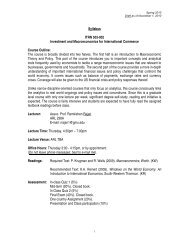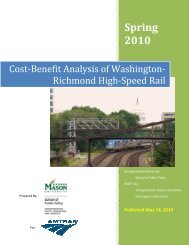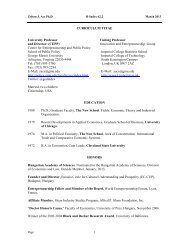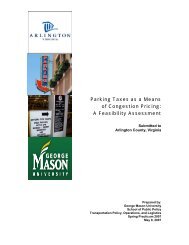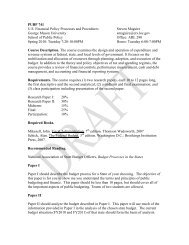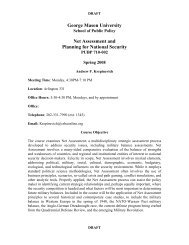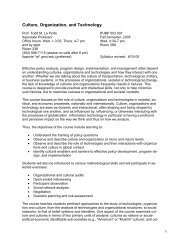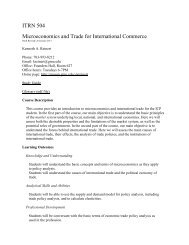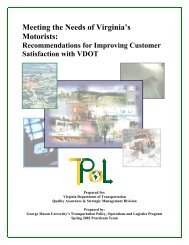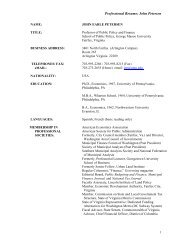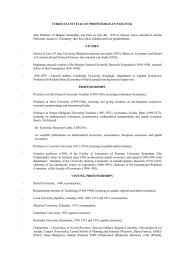Coordinating critical transportation infrastructure vulnerability
Coordinating critical transportation infrastructure vulnerability
Coordinating critical transportation infrastructure vulnerability
Create successful ePaper yourself
Turn your PDF publications into a flip-book with our unique Google optimized e-Paper software.
plans. The planning process should include representatives from all the departments that play a role<br />
in ensuring the security and emergency preparedness of the transit system.<br />
5.2.4 Inter-Agency Coordination<br />
The Inter-Agency Coordination category is another unique feature of this tool because most<br />
agencies do not consider the broader picture that they are part of a larger system and all planning<br />
should incorporate other systems. In one jurisdiction there are usually many other transit agencies<br />
with overlapping systems and which should be taken into account when plans are developed.<br />
5.2.5 Resource Assessment<br />
The Resource Assessment category asks the agency to assess the resources available including<br />
intangibles such as personnel experience and skills, current programs and policies as well as tangibles<br />
including monies and budgets.<br />
5.2.6 Security Management Assessment<br />
The Security Management Assessment category asks what security policies are currently in effect, for<br />
example what policies are in effect for a bomb threat.<br />
5.2.7 Critical Asset Assessment<br />
The Critical Asset Assessment category is sub-divided into:<br />
1. Electric Power<br />
2. Telecommunications<br />
3. Transportation<br />
4. Support Services<br />
Assets are “<strong>critical</strong>” when their loss either endangers human life or impacts the transit agency’s<br />
ability to maintain service. This step in the assessment process enables the agency to identify what<br />
assets must be protected, how these assets are valued both to the transit agency and a potential<br />
adversary as well as the impact if these assets are lost. Lost meaning to passengers, employees, public<br />
safety organization, general public and the transit operation. All assets are not <strong>critical</strong>, and some<br />
assets are only <strong>critical</strong> under certain conditions. This category asks the agency to list the assets that<br />
are mission <strong>critical</strong>. Without electric power, telecommunications, <strong>transportation</strong> and outside services<br />
available, it is necessary to have a contingency for redundancy in the system. 22<br />
5.2.8 Threat and Vulnerability Assessment<br />
The Threat and Vulnerability Assessment category follows directly after the <strong>critical</strong> asset inventory<br />
because it is important to identify and evaluate the vulnerabilities of these assets to specific threats,<br />
22 Ohio Department of Transportation “Guide to Conducting Critical Asset Protection Self-Assessments”<br />
PUBP 710/722 Page 25 of 60<br />
WMATA Case Study June 5, 2003



